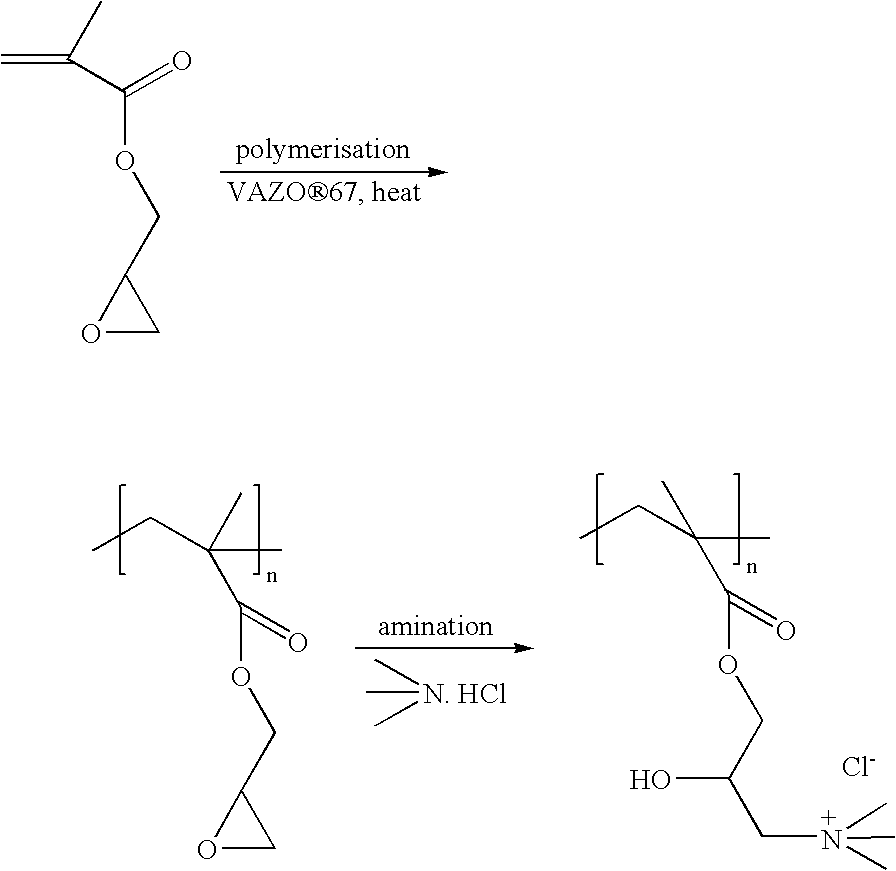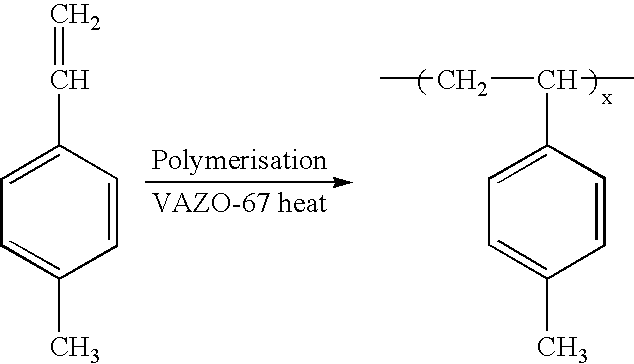Polymer Beads Incorporating Iron Oxide Particles
a technology of iron oxide particles and polymer beads, which is applied in the direction of magnetic materials, ion-exchangers, magnetic bodies, etc., can solve the problems of ineffective operation uneconomic process, and ineffective use of many commercial resins in high-volume treatment applications. achieve the effect of enhancing particle incorporation, effective dispersibility and superior yield
- Summary
- Abstract
- Description
- Claims
- Application Information
AI Technical Summary
Benefits of technology
Problems solved by technology
Method used
Image
Examples
example 1
Dispersing Agent=Teric® 305
[0105]General experimental procedure 2 was performed using Teric® 305 as the dispersant. Teric® 305 (available from Huntsman) contains an ethoxylated alkyl chain and a phosphate ester end group. Substantially all of the iron oxide was found to be incorporated into the resin beads, leaving the supernatant free of iron oxide. The iron oxide was also found to be uniformly distributed throughout the beads. When 0.2 g of this resin was added to 0.5 litres of a 10 mg / L tannic acid solution (simulating a water containing natural organic colour), 24% of the tannic acid was adsorbed by the resin in 30 minutes and 65% was adsorbed in 120 minutes.
example 2
Dispersing Agent=Alkanate® 40PF
[0106]General experimental procedure 2 was performed using Alkanate® 40PF as the dispersant. Alkanate® 40PF (Huntsman) is a phosphate-containing dispersant similar in composition to Teric® 305. The iron oxide was found to be uniformly distributed in the beads and the amount of iron oxide in the supernatant was found to be very low (less than 1% of the total iron oxide).
example 3
Dispersing Agent=Alkyl Ethoxylate Phosphate Esters
[0107]General experimental procedure 2 was performed using dispersants having hydrophobic alkyl chains of different length and a hydrophilic end group consisting of an ethylene oxide block terminated by a phosphate ester group. Such dispersants are available from Cognis under the Crafol trade mark. Crafol® AP12, AP60 and AP69 all showed excellent iron oxide retention and uniform distribution when used as the dispersant in general experimental procedure 2. The supernatents contained substantially no free oxide.
PUM
| Property | Measurement | Unit |
|---|---|---|
| size | aaaaa | aaaaa |
| size | aaaaa | aaaaa |
| particle size | aaaaa | aaaaa |
Abstract
Description
Claims
Application Information
 Login to View More
Login to View More - R&D Engineer
- R&D Manager
- IP Professional
- Industry Leading Data Capabilities
- Powerful AI technology
- Patent DNA Extraction
Browse by: Latest US Patents, China's latest patents, Technical Efficacy Thesaurus, Application Domain, Technology Topic, Popular Technical Reports.
© 2024 PatSnap. All rights reserved.Legal|Privacy policy|Modern Slavery Act Transparency Statement|Sitemap|About US| Contact US: help@patsnap.com










